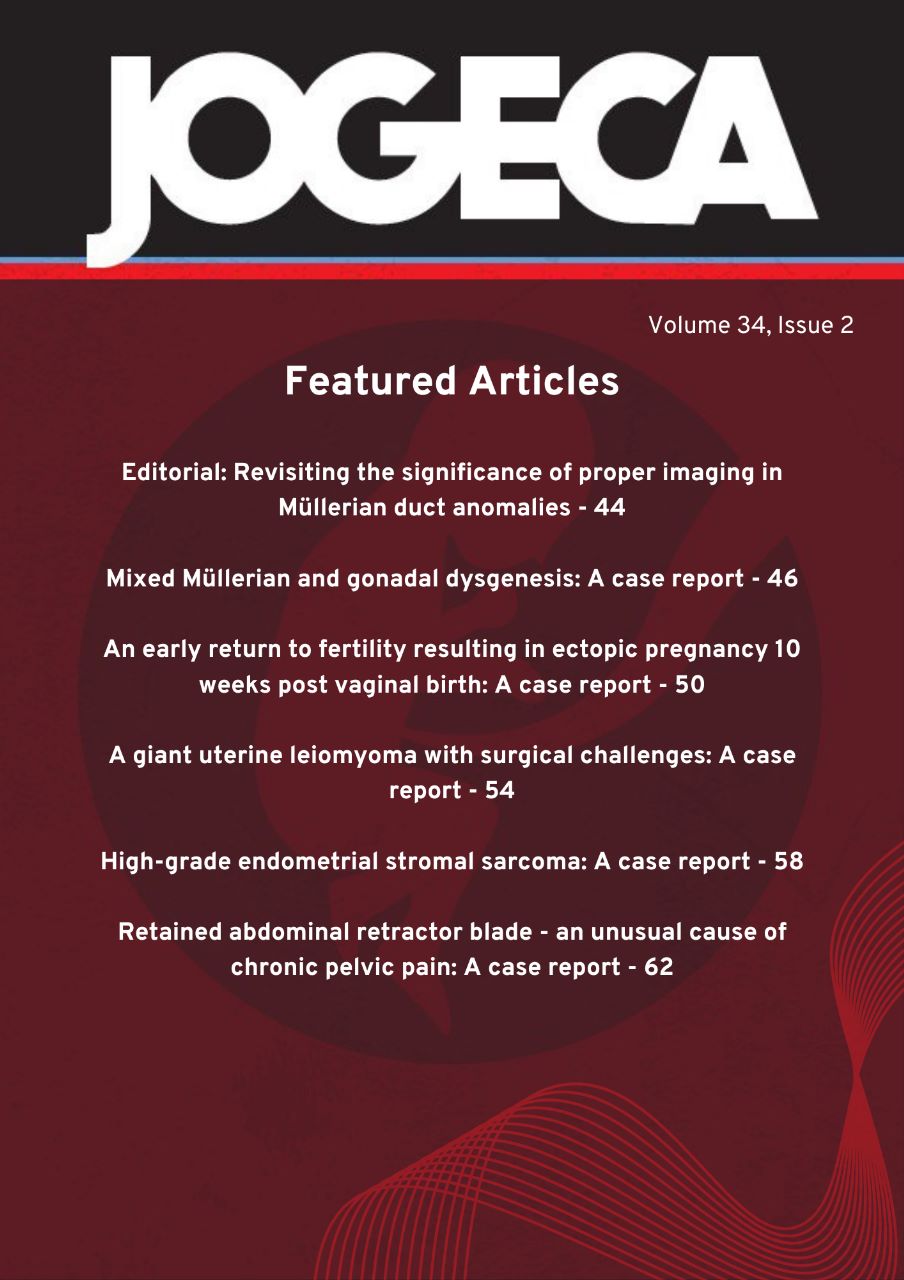The Impact of an educational intervention on the knowledge of bilateral tubal ligation (BTL) among women attending antenatal and family planning clinics in Bomet county: An interventional study
An Interventional study
DOI:
https://doi.org/10.59692/jogeca.v36i1.147Abstract
Background: Bilateral tubal ligation (BTL) is a highly effective contraceptive method with more than 99%
efficacy in preventing pregnancy. Its uptake remains low in Sub-Saharan Africa at 1.6%. The Kenya
Health and Demographics Survey 2014 indicated that almost half of the married women did not desire
further childbearing. The low acceptance of BTL as a contraceptive method in this region has been
attributed to a lack of knowledge and cultural and religious misconceptions.
Objective: This study aimed to determine the baseline level of knowledge about BTL and the impact of
an educational intervention among women attending antenatal care and family planning clinics at Tenwek
and Longisa Hospitals in Bomet County.
Methods: A quasi-experimental study design was employed. Demographic characteristics, knowledge of
BTL, perceived risks, and benefits were assessed at baseline and postintervention. A difference measure
was used to assess the impact of the intervention at 95% CI, with a p-value of 0.05 considered
significant. The data were analyzed using STATA version 18.
Results: The mean age of the participants at baseline and postintervention was 29.0±5.8 years and
29.2±5.6 years, respectively. Overall, 62% of the participants reported they would choose BTL, with 52%
in the postintervention arm. When asked if their religion allowed BTL, 80.6% responded yes and were
supported by their husband (92%); however, 62% reported they could not have it if their spouse was
against it. In general, lower knowledge scores were obtained in the postintervention arm, implying that
the educational intervention did not influence participants' knowledge of BTL. There was no statistically
significant difference in the participants' knowledge levels at baseline and postintervention [3.3 (-3.2 to
9.9); p-value=0.3].
Conclusion: Educating families, particularly women of childbearing age, about alternative family planning
methods would increase their adoption, allowing families to achieve desired family sizes while limiting the
impact of unwanted pregnancies and maintaining a healthy population.
Downloads
Published
How to Cite
Issue
Section
Categories
License
Copyright (c) 2024 The Authors.

This work is licensed under a Creative Commons Attribution 4.0 International License.




